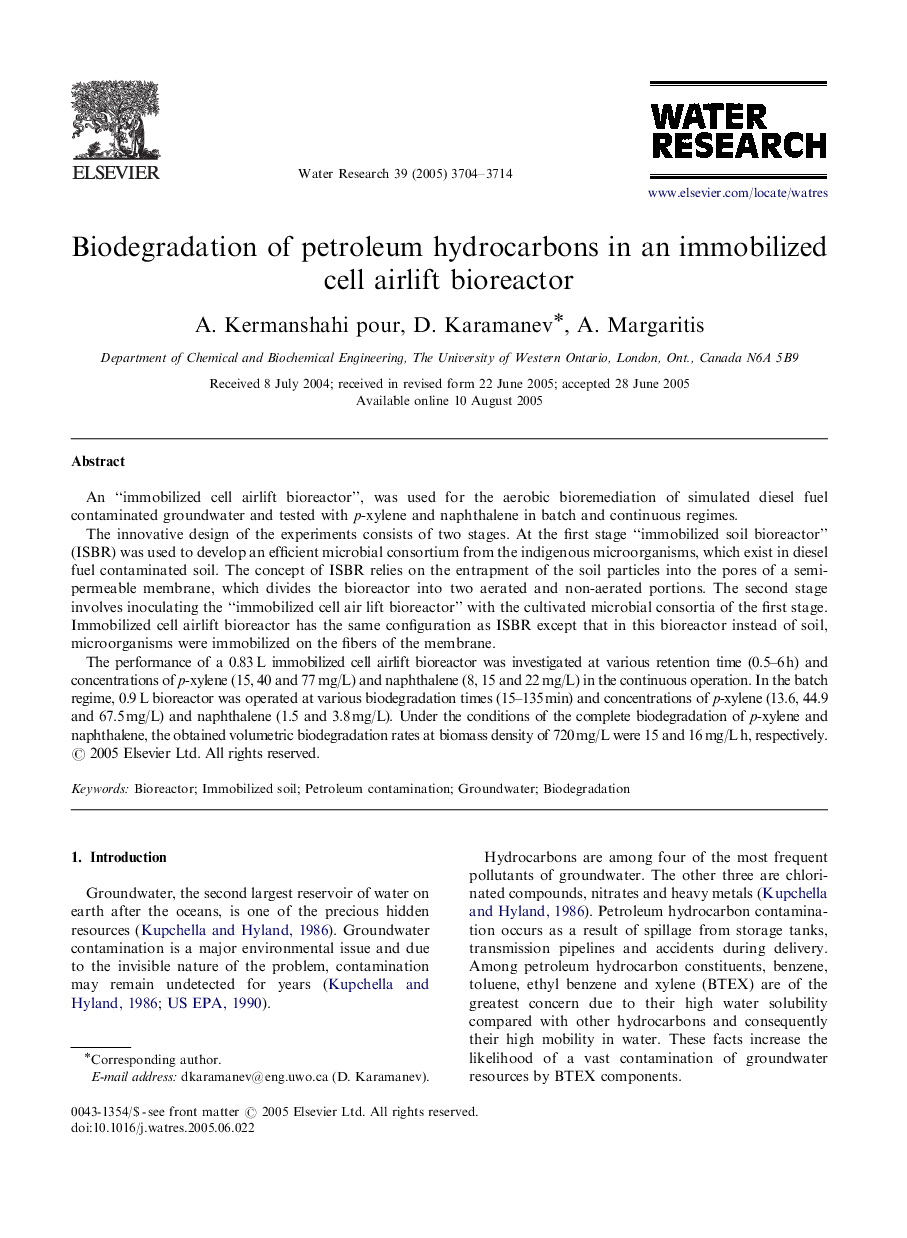| کد مقاله | کد نشریه | سال انتشار | مقاله انگلیسی | نسخه تمام متن |
|---|---|---|---|---|
| 4485194 | 1316943 | 2005 | 11 صفحه PDF | دانلود رایگان |

An “immobilized cell airlift bioreactor”, was used for the aerobic bioremediation of simulated diesel fuel contaminated groundwater and tested with p-xylene and naphthalene in batch and continuous regimes.The innovative design of the experiments consists of two stages. At the first stage “immobilized soil bioreactor” (ISBR) was used to develop an efficient microbial consortium from the indigenous microorganisms, which exist in diesel fuel contaminated soil. The concept of ISBR relies on the entrapment of the soil particles into the pores of a semi-permeable membrane, which divides the bioreactor into two aerated and non-aerated portions. The second stage involves inoculating the “immobilized cell air lift bioreactor” with the cultivated microbial consortia of the first stage. Immobilized cell airlift bioreactor has the same configuration as ISBR except that in this bioreactor instead of soil, microorganisms were immobilized on the fibers of the membrane.The performance of a 0.83 L immobilized cell airlift bioreactor was investigated at various retention time (0.5–6 h) and concentrations of p-xylene (15, 40 and 77 mg/L) and naphthalene (8, 15 and 22 mg/L) in the continuous operation. In the batch regime, 0.9 L bioreactor was operated at various biodegradation times (15–135 min) and concentrations of p-xylene (13.6, 44.9 and 67.5 mg/L) and naphthalene (1.5 and 3.8 mg/L). Under the conditions of the complete biodegradation of p-xylene and naphthalene, the obtained volumetric biodegradation rates at biomass density of 720 mg/L were 15 and 16 mg/L h, respectively.
Journal: Water Research - Volume 39, Issue 15, September 2005, Pages 3704–3714